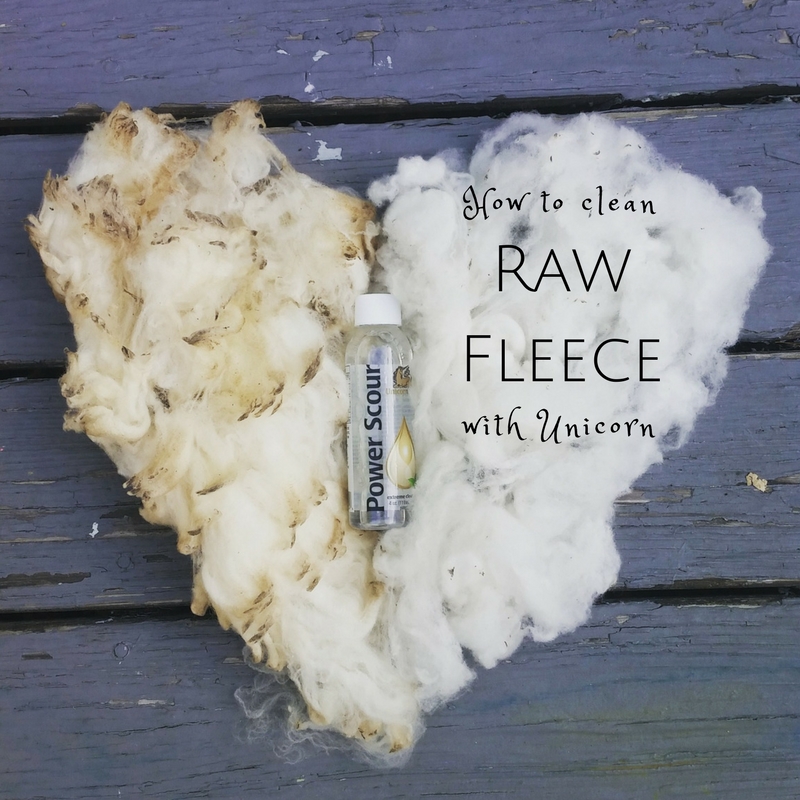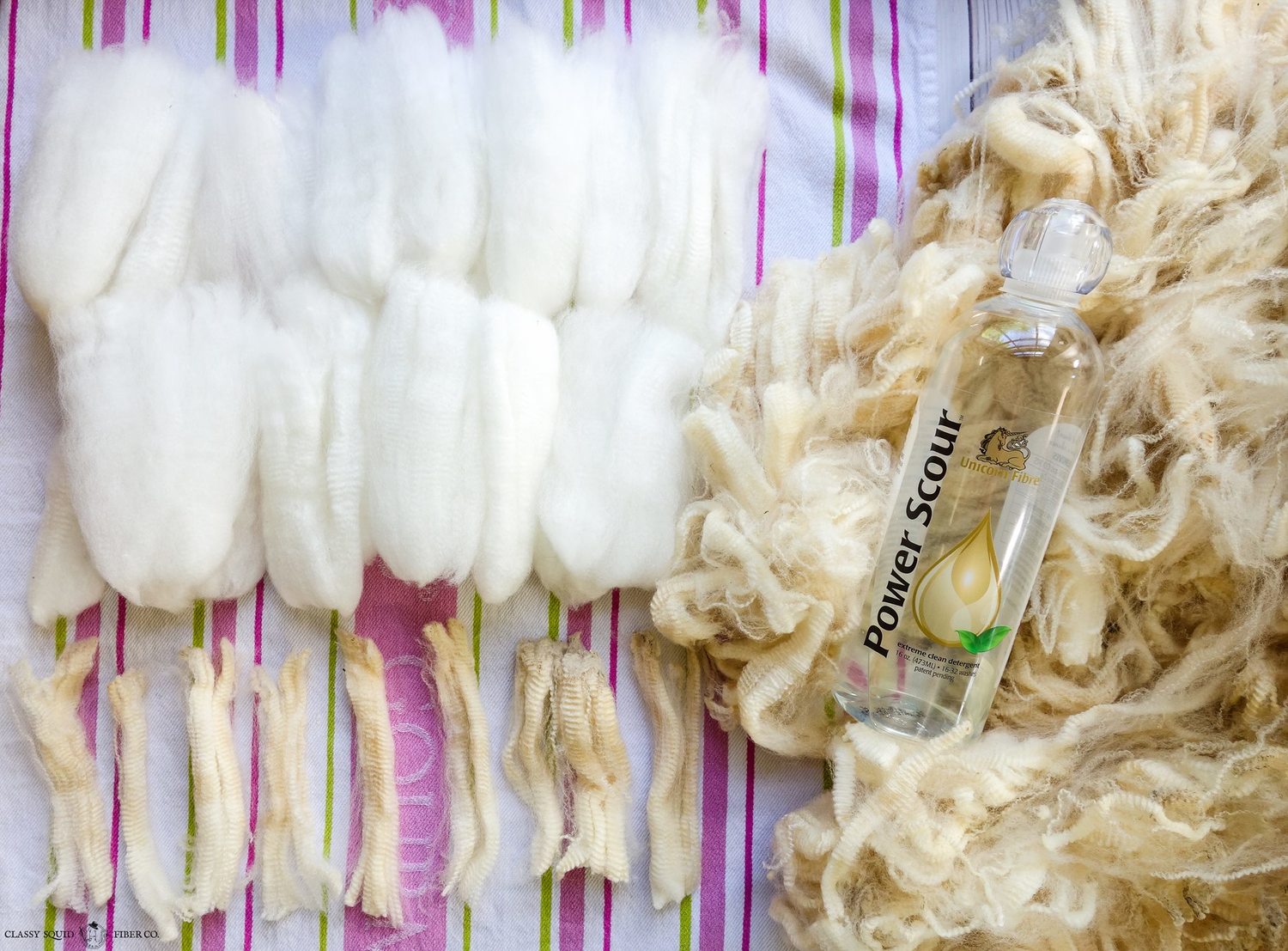How to Wash Raw Wool Fleece
AN INTRODUCTION TO CLEANING RAW WOOL FIBER
BEFORE YOU START WASHING, HERE IS HOW TO PREPARE YOUR WOOL FOR WASHING & TIPS ON SUCCESSFULLY WASHING YOUR FLEECES.
Elysa at 222 Handspun has a wonderful tutorial here for you to watch!
SUPPLIES REQUIRED:
Raw Wool. We recommend skirting your wool, removing tags, and vegetable matter. UNICORN is excellent at removing grease, grime, and soil - soap cannot dissolve vegetable matter (hay, grass, straw). If your fleece has a lot of vegetable matter, it will need additional processing (picking, carding) to become fully clean.
A Washing Receptacle appropriate to the amount of wool you will be washing. If you're just washing a couple ounces, a large bowl is perfect. For a couple pounds of raw wool, you can use a bucket or sink. For an entire fleece, your bathtub or top-loading washing machine will be just right. Use the Goldilocks Principle. Not too little. Not too much. Just right.
Hot Water. UNICORN cleans at lower temperatures, so test the hottest water that comes out of your tap. If it is too hot to touch - it's plenty hot enough to wash your wool. A temperature of 140F is sufficient if you want to test the exact temperature. We recommend turning up your hot water heater so you have plenty of hot water available while you're washing fleece. Then turn it back down when you're done to save energy. Some of the fibers below may require hotter water than what comes out of your tap. But most will not.
UNICORN Power Scour to Wash Greasy / Sticky / Waxy / Lanolin Wools and Mohair.
UNICORN Fibre Wash for fibers that do not hold grease (angora, alpaca, llama, cashmere, camel, etc.) but rather need dust & dirt washed from them instead of lanolin.
UNICORN Fibre Rinse to Soften & Protect (optional) - if you plan on dyeing your fibers we recommend using Fibre Rinse when you are setting your handspun & dyed yarns. But if you are keeping your fibers a natural color - feel free to add some Fibre Rinse to your final rinse bath to soften and protect the wools before spinning.
A place to dry your wool when it's done being washed, direct sunlight works great. Wool can hold up to 30% of it's weight in moisture without feeling damp, so make sure it doesn't feel cool to the touch before you store it.
Cotton Pillowcases for storing your clean, washed wool. We do not recommend storing wool in plastic, as it may "sweat" moisture and mold and mildew may grow. Plastic bags can also cause fine wools like angora and cashmere to felt. However, it is okay to store washed wool in cotton pillowcases, and place those pillowcases into plastic bins to protect from odors, pets, and moths.
HELPFUL HINTS & TIPS
Protect from Moths. For additional protection of your fleeces, add a lavender sachet or cedar sachet to your bags of clean fleece - as this is a natural moth repellant and can keep your fleeces smelling fresh.
Overnight Soak. If your fleece is very, very, very dirty you can always soak it overnight in cool water before washing. This step might not be necessary, but some spinners swear by this step.





